Mark Nicholls visits the Dolomites and discovers an oft-forgotten aspect of World War One history…
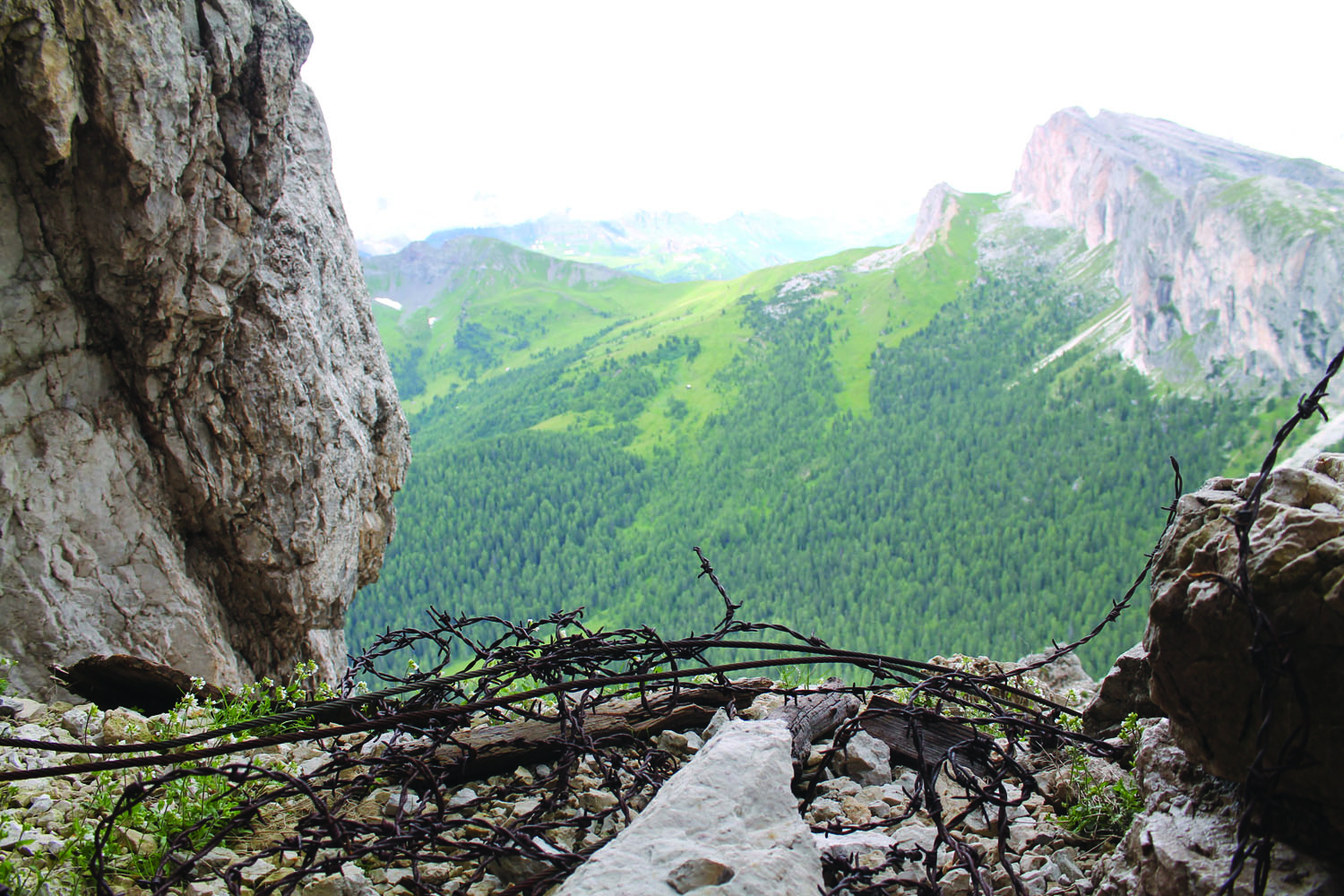
The peaks are sharp and jagged, forming a ruggedly stunning backdrop across the Dolomites. This is a landscape considered so impressive that it has been declared a UNESCO World Heritage Site.
With 18 peaks rising to above 3,000 metres and a beautiful mountain landscape of vertical walls, sheer cliffs and a high density of narrow, deep and long valleys, the terrain poses tantalising challenges to hikers and climbers and, in the depths of winter, downhill and cross country skiers.
Yet after the snows have melted, evidence of an incredible wartime history is revealed. It is a landscape criss-crossed with trenches, man-made caverns, gullies and the incredible via ferrata, the “iron-road” forming an intricate system of wires that enabled troops to move swiftly and nimbly through the mountains.
It may seem half a world away from the muddy squalor of the trenches of the Western Front. But the rocky terrain and mountain trails of the Dolomites are just as much a part of the World War One frontline as the poppy-strewn fields of Belgium and France.
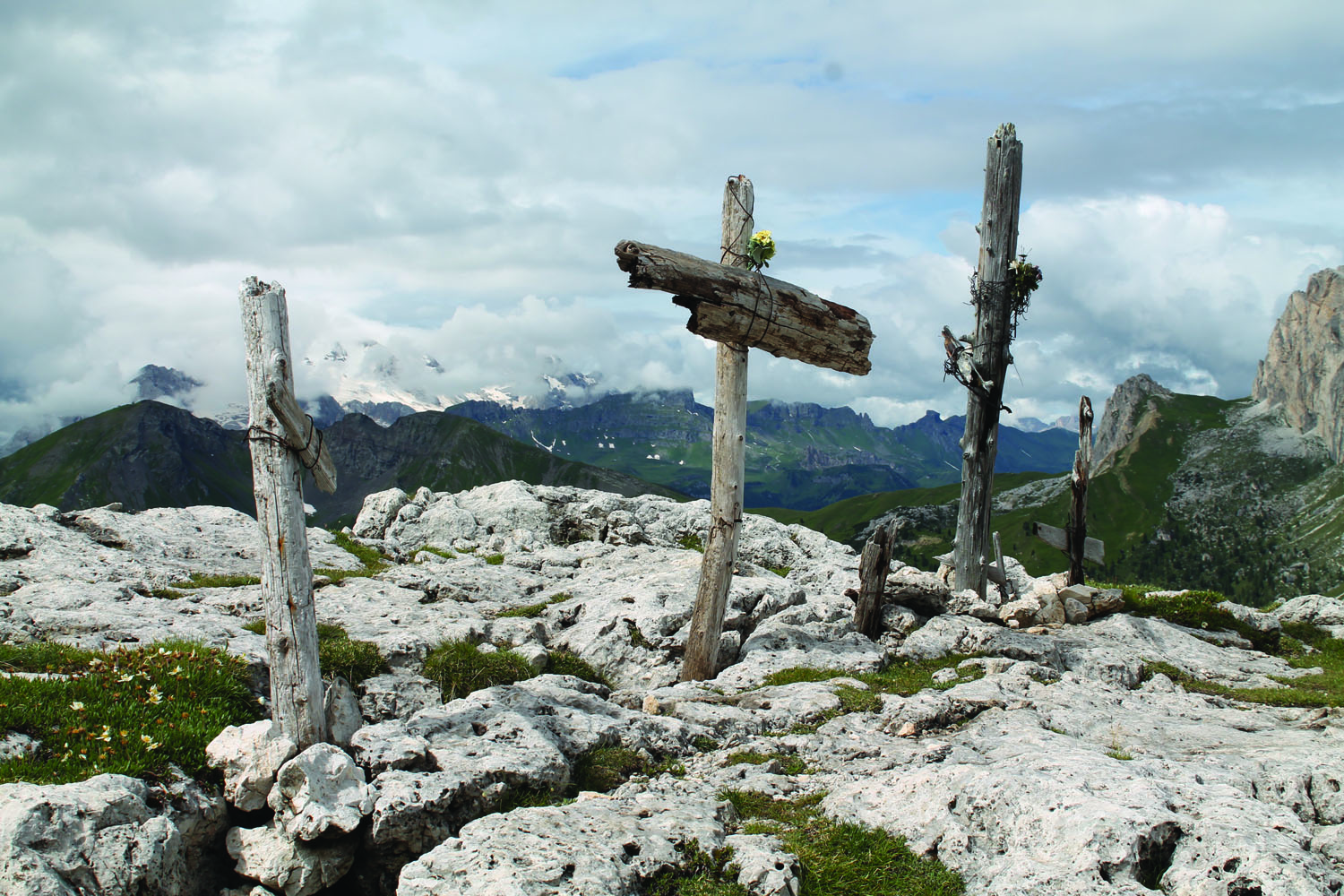
Rather than being a network of trenches dug from the earth of open farmland and meadow, these are trenches hewn from limestone rock, where the troops of the Austro-Hungarian Empire faced their Italian foe in the passes, summits and ridges of the Dolomites.
While the lie of the land may have been different, the war of attrition and its outcomes were similar to those of Flanders Fields: long, drawn-out months of little movement punctuated by short pitched battles with both sides gaining or losing a few metres of ground, and always with great loss of life.
Today, in the Dolomites above the town of Cortina d’Ampezzo, the network of tunnels and vie ferrate remain an eerie legacy of a war fought a century ago.
It wasn’t until June 1915 that war came to Cortina d’Ampezzo, which had been part of the Austro-Hungarian Empire for 400 years. But as conflict destabilised Europe, an opportunistic Italian army saw a chance to re-take the territory.
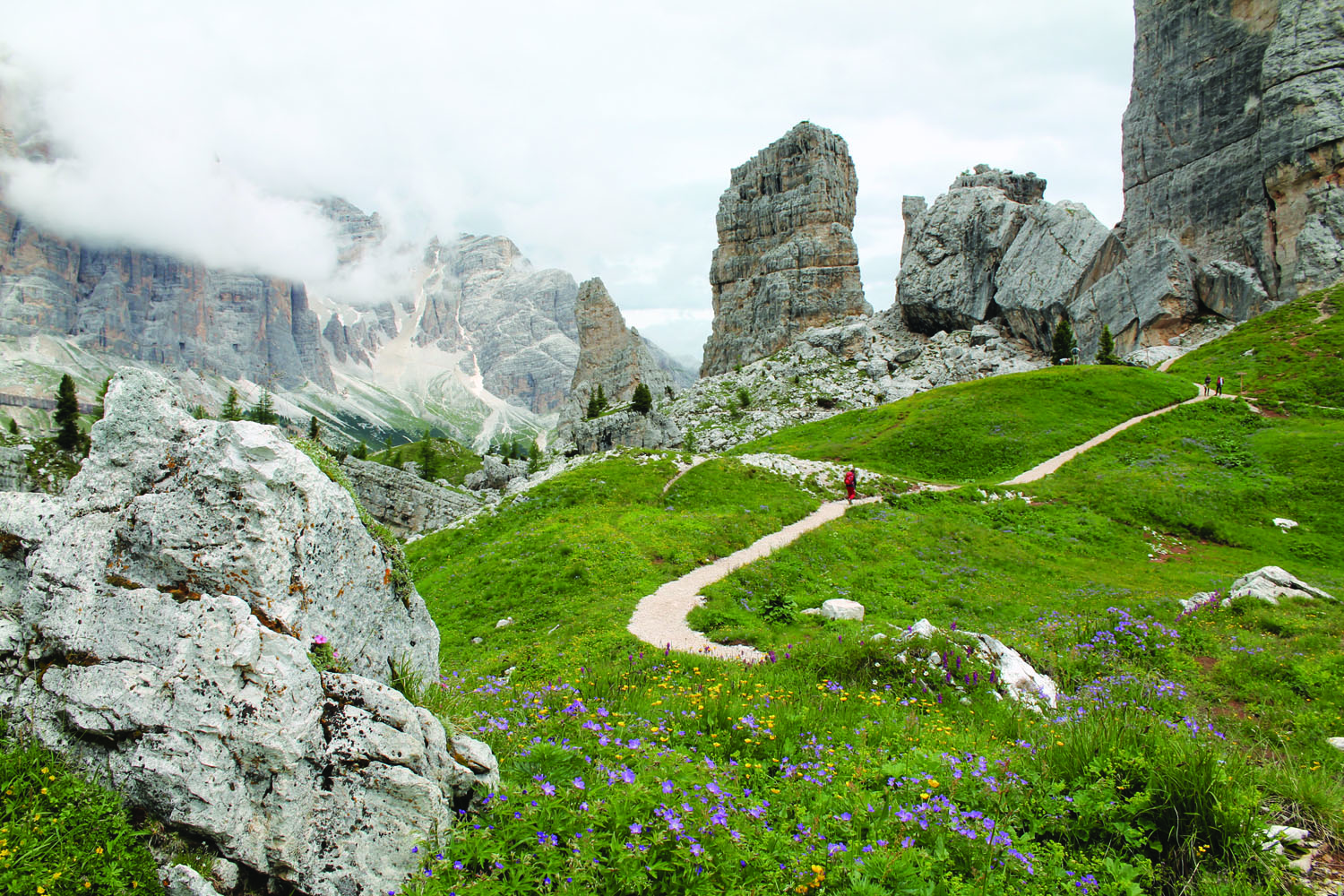
I began my exploration in the Passo Valparola, just above an abandoned Austrian fortress, with my guide Paolino Tassi. Before long, we are in trenches carved out of the dolomite rock, a form of limestone. There are chambers, machine gun emplacements and the remains of a kitchen; the walls, which offered Austro-Hungarian forces shelter from the Italian guns, soar five metres above.
Hundreds of thousands of troops were dug into this area some 17km up the valley from the town of Cortina d’Ampezzo, which often remained untouched by the entrenched fighting a short distance away. Tens of thousands and more died; from the fighting, the cold or falls, with up to 60,000 swept to their deaths by avalanches.
“It was cold in the winter, particularly harsh in 1916, with 20 metres of snow, and that is when many thousands of men died in avalanches,” explained Paolino.
Nearby is Cinque Torri – the five towers – an area made famous by English and French climbers and still as popular with mountaineers today as it was in the carefree times before WWI. The appeal is the steep sides of the Grande Torre, the Romano Torre and the smaller English Tower, which are all visible from Cortina in the distance.
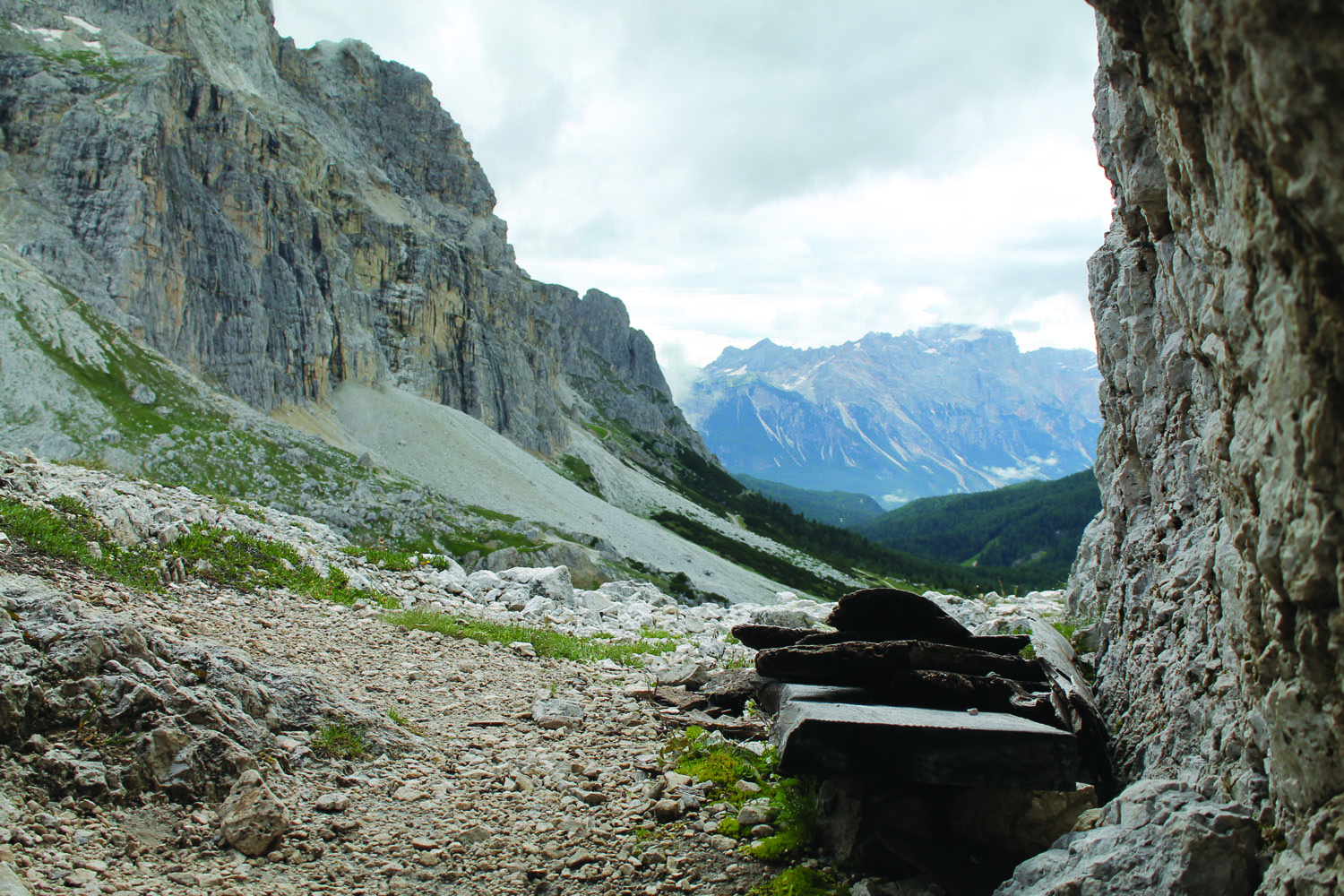
Yet beneath is the Italian fallback line with its lookout posts and supply routes.
My halt for the night is at a mountain refuse in perhaps one of the most famous parts of the WWI remains on Mount Lagazuoi.
Taking the Funivia del Lagazuoi cable car up to Rifugio Lagazuoi, at 2,752 metres above sea level, the panorama reaching out from the refuge offers some of the most magnificent views over the Dolomites, while behind you lies the Austrian mountain troop path, and hidden within the mountain below is an incredible network of tunnels constructed by the Italians.
As I relax in the cosy mountain retreat with a glass of red wine, hikers – some in pairs, others in larger groups – roll in for the night.
Guido Pompanin, who runs the Rifugio Lagazuoi with his wife Alma, explains that most guests are hikers who stay for one night and then move on to another refuge as they hike around the Dolomites. Some are interested in the wartime remains, others more enamoured of the spectacular landscape.
“We have 74 rooms, some are in dormitories but there are some private rooms, and we also have a sauna which is popular,” explains Guido. “Our guests are from all over the world – Japan, New Zealand, Germany, America, England and Russia – and they stay for food and a bed and then move on. All the rifugios in the mountains are family businesses and we work well with each other.”
The following morning, with the sky bright blue and billowing white clouds giving context to the mountain, I follow Paolino down around the cable car station, put on harnesses, helmets and a headlight and slip into the tunnels of Lagazuoi.
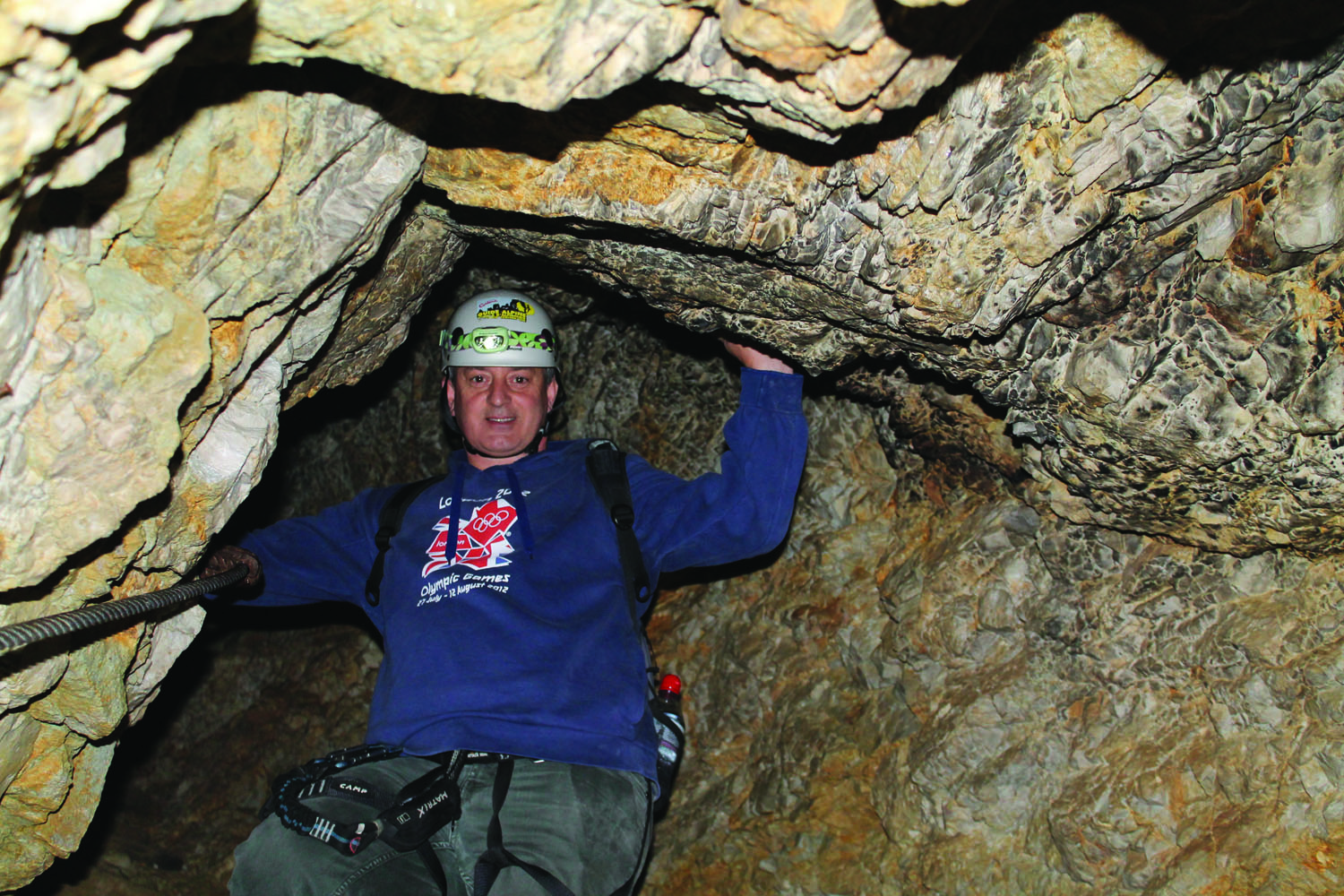
Low, narrow dark and damp, they wind down inside the mountainside for almost 300 metres, with the Italian tunnels often a mere few yards away from where their Austrian foe were.
There are hidden chambers, look-out posts, gun positions and evidence of supply lines
The steps are steep, often slippery, with the porous rock dripping water all along the route. At points, I clip onto the metal wires, the via ferrata used by the Kaiserjager – the Imperial Austrian army – and their Italian counterparts.
It is the via ferrata which often captures the imagination. Now a leisure activity with climbers clipping to metal cables fixed to mountainsides – and often created elsewhere in the world – they were built during the conflict to enable the movement of troops and supplies. There is a huge variety of via ferrata paths in the Dolomites, some are short and easy climbs, others are challenging and require a good level of physical fitness.
It can take an hour to cautiously negotiate the ascent, which deposits us on a narrow ledge. Harnessed to this ‘iron road’, we follow a supply path down to the cable car station.
As the war in the Dolomites raged, from June 1915 to October 1917, both sides tried to gain the high ground and set up positions and fortifications on the summits and ridges.
Paolino explained how the shape of the mountain changed during the course of the conflict as each side packed tons of explosives into chasms and ignited them.
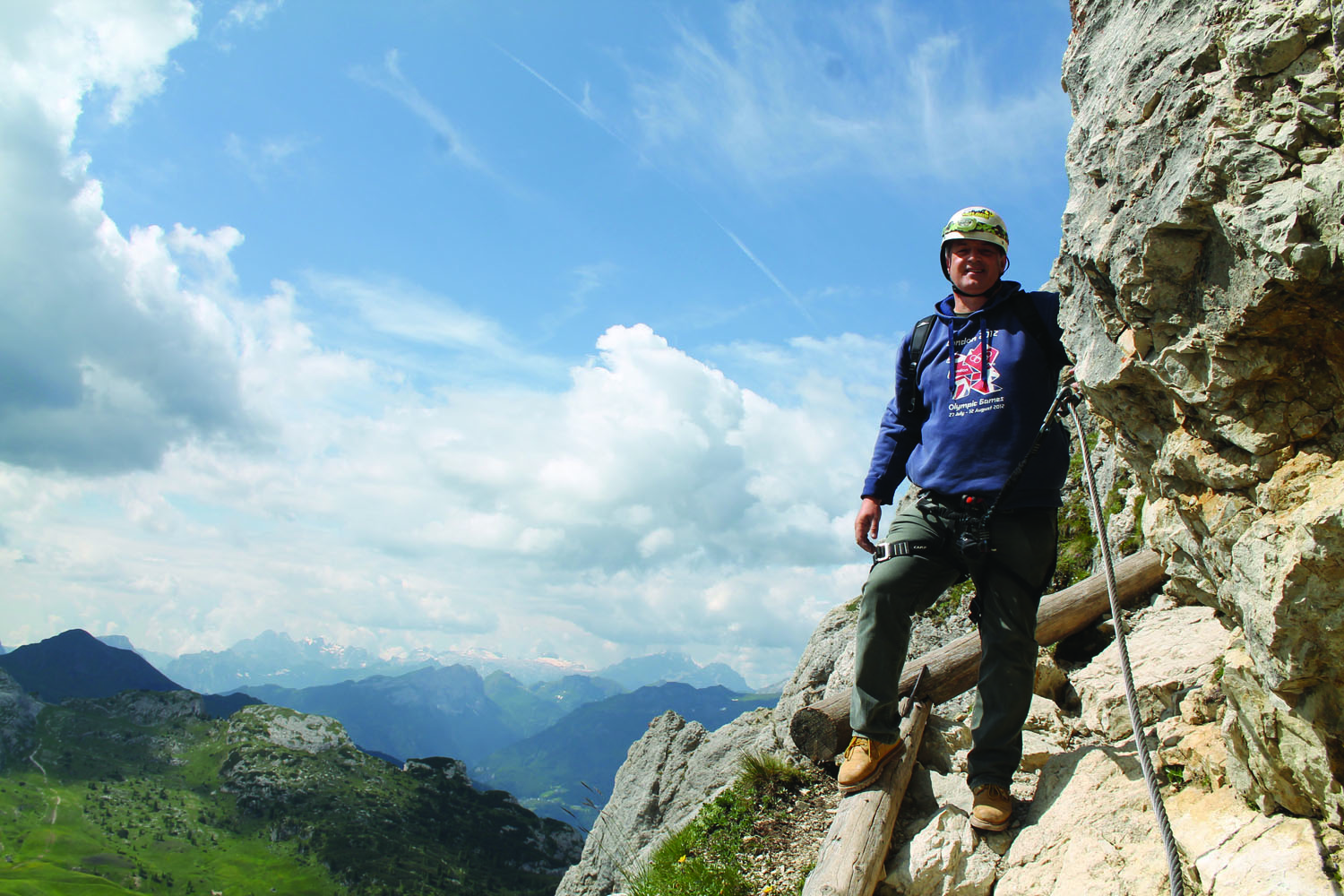
“The area was strategically important, with the Italians digging tunnels as they tried to dislodge the Austrians from their vantage point of the mountain top,” he told us. “At one stage in June 1917, they filled a chamber with 32 tonnes of explosive to try to blast the enemy out of their positions.”
The explosion blew the summit off Little Lagazuoi, and while no Austrians were killed, as they fled after hearing the tunnelling, the Italians did secure the position, but the shape of the mountainside was irrevocably changed.
We are all too familiar with the wooden lined trenches dug out of the muddy fields of Flanders and Ypres, but this trench network, hewn out of the heart of a mountain, is one of the great engineering feats of World War One.
Towards the end of 1917, after an Austrian and German offensive broke through the Italian lines at Caporetto, the Italians retreated from the mountains to defend Venice, leaving behind the trenches, memorials and miles of tunnelling.
Yet while the wartime history is powerful and poignant, there is so much more to the landscape: mountain biking, hiking through paths ablaze with summer flowers, and road biking with sharp hairpin bends up the various routes into the high mountains.
The Dolomites feature 18 peaks which rise to above 3,000 metres and summer is the most popular season to visit them.
But Cortina itself also has a reputation as a picturesque and diverse winter ski resort, renowned as it is for its array of spectacular backdrops. It was initially made famous by hosting the 1956 Winter Olympics – which, incidentally, was the first to be broadcast on TV.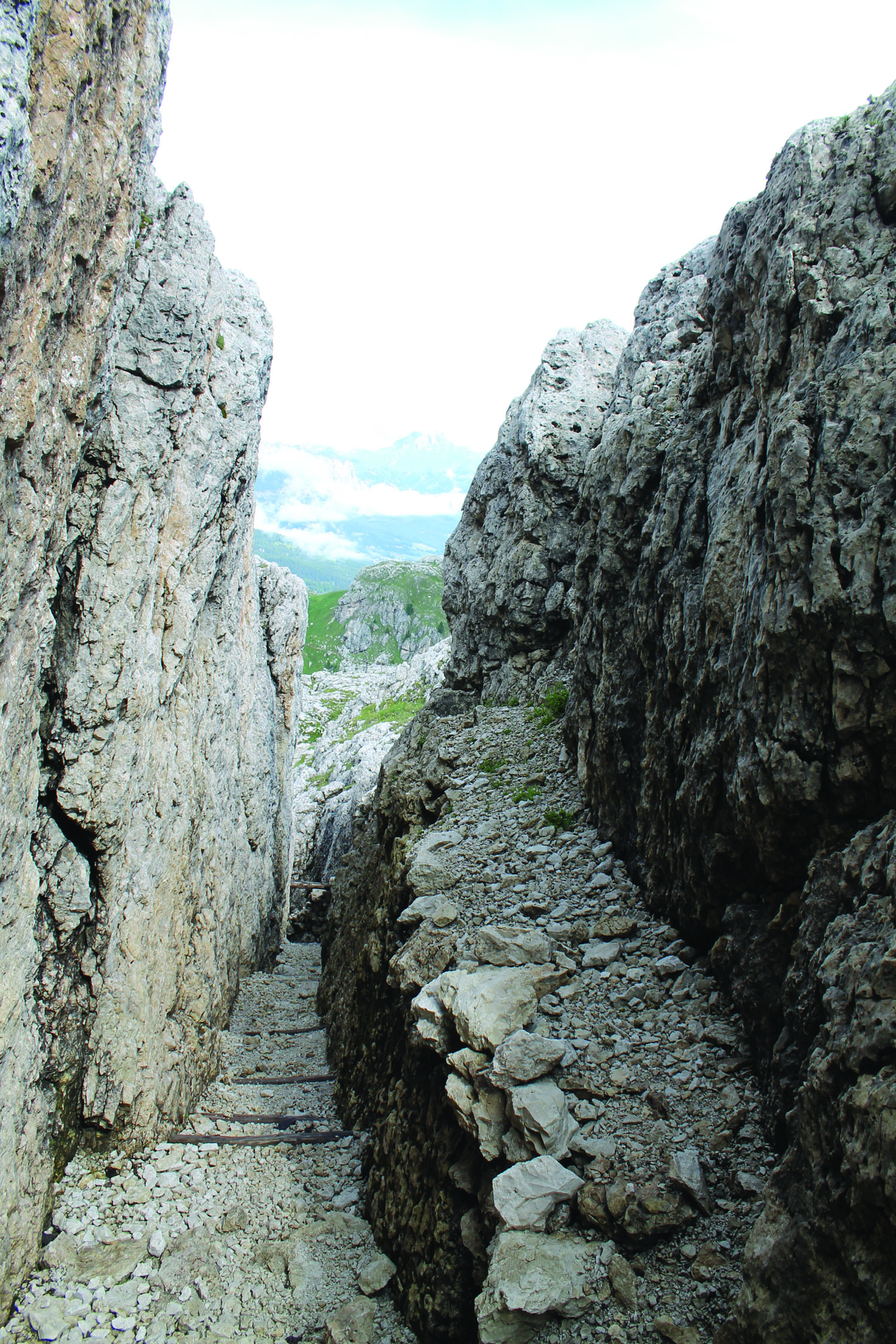
Corso Italia is the centre of town with an extensive choice of bars, restaurants, cafes and shops, and there have been many well-known films shot in Cortina d’Ampezzo, including The Pink Panther (David Niven and Peter Sellers); Cliffhanger (Sylvester Stallone) and the James Bond film For Your Eyes Only (Roger Moore). Frank Sinatra stayed at the five-star Cristallo Hotel when filming Von Ryan’s Express and today the hotel remains popular with Middle Eastern royalty aas well as A-list celebs.
As with any part of Italy, food is a major attraction in the Dolomites, with excellent menus in the mountain Rifugio, first class restaurants in hotels and the centre of town, and a growing tradition of combining traditional regional dishes with a modern outlook.
Championing that is Riccardo Gaspari, 29, a former downhill ski racer whose family run the El Brite de Larieto agriturismo establishment, just above Cortina d’Ampezzo.
They rear their own meat, make pasta, polenta and gnocchi, source herbs and spices from their kitchen garden and create the most delicious casunzei, a signature dish of the region, made from egg pasta ravioli filled with beetroot and flavoured with hazel-colour butter.
Speck, salami and prosciutto are prepared on site and allowed to mature with cheeses and yoghurts, made in their own dairy, and bread – particularly the traditional mountain bread of puccia, baked with fennel seeds – is baked in the farm kitchen.
Riccardo explains: “Our menu is very traditional and I’m aiming to revive old and traditional recipes but giving them a modern twist. My dishes are all based on recipes from the region.”
Cortina d’Ampezzo offers a fascinating insight into another dimension of World War One history but it is the access to the stunning and rugged landscape which enables visitors to enjoy the natural attractions of today while they also discover the poignant past.
